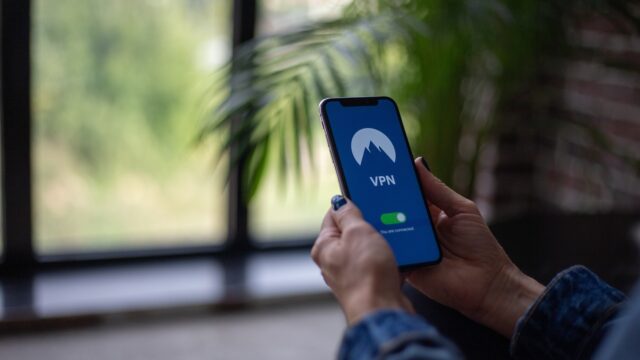İpad Çıkış Tarihleri
This article provides a comprehensive overview of the release dates of different iPad models. From the first-generation iPad to the latest iPad Air, each model has brought new features and advancements to the market. Let’s dive into the timeline of these remarkable devices.
iPad 1: The first iPad was released on April 3, 2010. It revolutionized the tablet industry with its large touchscreen display and intuitive interface. This groundbreaking device opened up new possibilities for entertainment, productivity, and communication.
iPad 2: The second-generation iPad was launched on March 11, 2011. Building upon the success of its predecessor, the iPad 2 introduced several notable improvements. It featured a thinner and lighter design, making it even more portable. Additionally, the inclusion of dual cameras allowed users to capture photos and engage in video calls.
iPad 3 (Retina Display): Released on March 16, 2012, the third-generation iPad introduced the stunning Retina display. With its high resolution and vibrant colors, this display offered an unparalleled visual experience. Users could enjoy sharper text, richer graphics, and enhanced multimedia content.
iPad Air: The iPad Air was unveiled on November 1, 2013. It brought a significant design overhaul, featuring a thinner and lighter profile compared to its predecessors. The iPad Air also boasted the powerful A7 chip, delivering remarkable performance and efficiency.
These are just a few highlights from the iPad lineup. Each release has pushed the boundaries of technology, providing users with innovative features and an exceptional user experience.
iPad 1
The first iPad model, known simply as the iPad 1, was released on April 3, 2010. This groundbreaking device revolutionized the tablet market and set the stage for future generations of iPads. With its sleek design and intuitive interface, the iPad 1 quickly became a must-have gadget for tech enthusiasts and casual users alike.
Key features of the iPad 1 included a 9.7-inch multi-touch display, allowing users to interact with their favorite apps and media with ease. It also boasted a powerful A4 chip, ensuring smooth performance and seamless multitasking. The iPad 1 introduced the App Store, providing access to a wide range of applications tailored specifically for the iPad.
Additionally, the iPad 1 offered built-in Wi-Fi connectivity, enabling users to browse the internet, stream videos, and stay connected wherever they went. It also had a long-lasting battery life, allowing for hours of uninterrupted use. With its innovative features and sleek design, the iPad 1 laid the foundation for the future success of the iPad line.
iPad 2
The iPad 2, the second generation of Apple’s groundbreaking tablet, was released on March 11, 2011. Building upon the success of its predecessor, the iPad 2 introduced several key improvements that further solidified its position as a leader in the tablet market.
One of the most notable enhancements of the iPad 2 was its thinner and lighter design. Apple managed to slim down the device, making it even more portable and comfortable to hold. This sleeker profile was achieved without sacrificing any of the device’s durability or performance.
The iPad 2 also marked the introduction of dual cameras. With a front-facing camera and a rear-facing camera, users could now engage in video calls and capture photos and videos on the go. This added functionality opened up new possibilities for communication and creative expression.
Another significant improvement was the increased processing power. The iPad 2 featured a powerful A5 chip, which delivered faster performance and smoother multitasking capabilities. Users could seamlessly switch between apps, play graphics-intensive games, and enjoy a more responsive overall experience.
Overall, the iPad 2 was a major step forward in terms of design and performance. Its release date marked a new chapter in the evolution of tablets, setting the stage for future innovations in the iPad lineup.
Thinner Design
The iPad 2 introduced a thinner and lighter design compared to its predecessor. Apple made significant improvements in terms of portability and sleekness. The device was only 8.8mm thin, making it 33% thinner than the original iPad. This slim profile allowed users to comfortably hold and carry the iPad 2 for extended periods without feeling weighed down.
In addition to being thinner, the iPad 2 was also lighter, weighing in at just 1.33 pounds. This weight reduction made it easier to hold the device with one hand, providing a more ergonomic experience for users. Whether you were using the iPad 2 for work, entertainment, or creative pursuits, the thinner and lighter design enhanced the overall usability and convenience of the device.
Dual Cameras
Dual Cameras: One of the key improvements in the iPad 2 was the introduction of front and rear-facing cameras. This allowed users to not only capture photos and videos but also engage in video calls and conferences. The front-facing camera, positioned above the display, enabled users to take self-portraits and participate in FaceTime conversations, adding a whole new level of interaction to the iPad experience.
The rear-facing camera, located on the back of the device, provided users with the ability to capture high-quality photos and videos. Whether it was capturing breathtaking landscapes or recording precious moments with loved ones, the iPad 2’s dual cameras offered a versatile and convenient way to document life’s special moments.
With the addition of these cameras, the iPad 2 became more than just a tablet; it became a powerful tool for creativity, communication, and self-expression. Whether you were a professional photographer, a casual user, or someone who simply enjoyed capturing memories, the iPad 2’s dual cameras opened up a world of possibilities.
Increased Processing Power
The second-generation iPad introduced significant improvements in terms of processing power. With the upgraded processor, users experienced a faster and smoother performance compared to the first-generation iPad. The enhanced processing power allowed for quicker app launches, seamless multitasking, and improved overall responsiveness.
The upgraded processor in the second-generation iPad was designed to handle more demanding tasks and provide a better user experience. It featured a faster clock speed and improved graphics capabilities, making it ideal for gaming, video editing, and other resource-intensive activities.
Additionally, the increased processing power enabled the iPad to handle more complex and advanced applications, ensuring a seamless user experience even with multiple apps running simultaneously. This improvement opened up new possibilities for productivity, creativity, and entertainment on the iPad.
In summary, the second-generation iPad’s increased processing power revolutionized the way users interacted with their devices, providing a faster and more efficient performance for a wide range of tasks and applications.
Retina Display
The third-generation iPad introduced the revolutionary Retina display, which completely transformed the visual experience for users. With its high-resolution screen, the Retina display offered incredibly sharp and vibrant images, making everything on the iPad look more lifelike and immersive.
The Retina display featured a pixel density of 264 pixels per inch, providing four times the number of pixels found in the previous iPad models. This resulted in incredibly detailed graphics, crisp text, and stunning colors. Whether you were browsing the web, watching videos, or playing games, the Retina display ensured that every detail was displayed with exceptional clarity.
Furthermore, the Retina display utilized advanced technology to reduce glare and reflections, making it easier to view the screen even in bright sunlight. This made the third-generation iPad a perfect companion for outdoor use, allowing users to enjoy their favorite content without any distractions.
iPad Air
The iPad Air was released on November 1, 2013, and quickly became a game-changer in the tablet market. This sleek and powerful device introduced a range of notable features that set it apart from its predecessors.
One of the standout features of the iPad Air is its thinner and lighter design. Weighing in at just one pound, it is incredibly portable and comfortable to hold for extended periods. The slim profile makes it easy to slip into a bag or backpack without adding unnecessary bulk.
Another impressive feature of the iPad Air is its A7 chip. This powerful processor delivers enhanced performance, allowing for smooth multitasking, speedy app launches, and seamless graphics. Whether you’re browsing the web, editing photos, or playing games, the iPad Air can handle it all with ease.
The iPad Air also boasts a stunning Retina display, which offers crisp and vibrant visuals. With a resolution of 2048 x 1536 pixels, every image and video comes to life with incredible detail and clarity. Whether you’re watching movies, reading e-books, or editing photos, the Retina display provides an immersive and enjoyable viewing experience.
Overall, the iPad Air combines sleek design, powerful performance, and a stunning display to deliver an exceptional tablet experience. Whether you’re a student, professional, or casual user, the iPad Air is sure to impress with its impressive features and capabilities.
Thinner and Lighter Design
The iPad Air is renowned for its sleek and lightweight design, making it incredibly portable and easy to handle. With a thickness of just 6.1mm and weighing only 1 pound, it is one of the thinnest and lightest tablets on the market. This slim profile allows users to comfortably hold and carry the iPad Air for extended periods without experiencing any strain or discomfort.
In addition to its slender build, the iPad Air also boasts a stunning aluminum unibody construction, giving it a premium and sophisticated look. The device feels solid and well-built in the hands, providing a sense of durability and reliability.
Apple’s commitment to creating a thinner and lighter iPad Air has not compromised its performance or functionality. Despite its slim design, the tablet still packs a powerful punch with its advanced features and capabilities. Whether you’re using it for work or entertainment, the iPad Air offers a seamless and immersive experience in a compact and lightweight package.
A7 Chip
The iPad Air introduced the powerful A7 chip, which significantly enhanced the performance of the device. The A7 chip was a major upgrade from previous iPad models, providing faster processing speeds and improved graphics capabilities. With its 64-bit architecture, the A7 chip delivered a seamless and efficient user experience, allowing for smoother multitasking and faster app loading times.
In addition to its impressive performance, the A7 chip also contributed to the overall energy efficiency of the iPad Air. It enabled the device to deliver exceptional battery life, allowing users to enjoy extended usage without worrying about frequent recharging. The A7 chip’s power management capabilities optimized power consumption, ensuring that the iPad Air could handle demanding tasks while conserving energy.
The A7 chip revolutionized the iPad Air, providing a significant boost in performance and efficiency. Whether you’re browsing the web, streaming videos, or running resource-intensive apps, the A7 chip delivers the power and speed required for a seamless and immersive user experience.






Yorumlar (0)